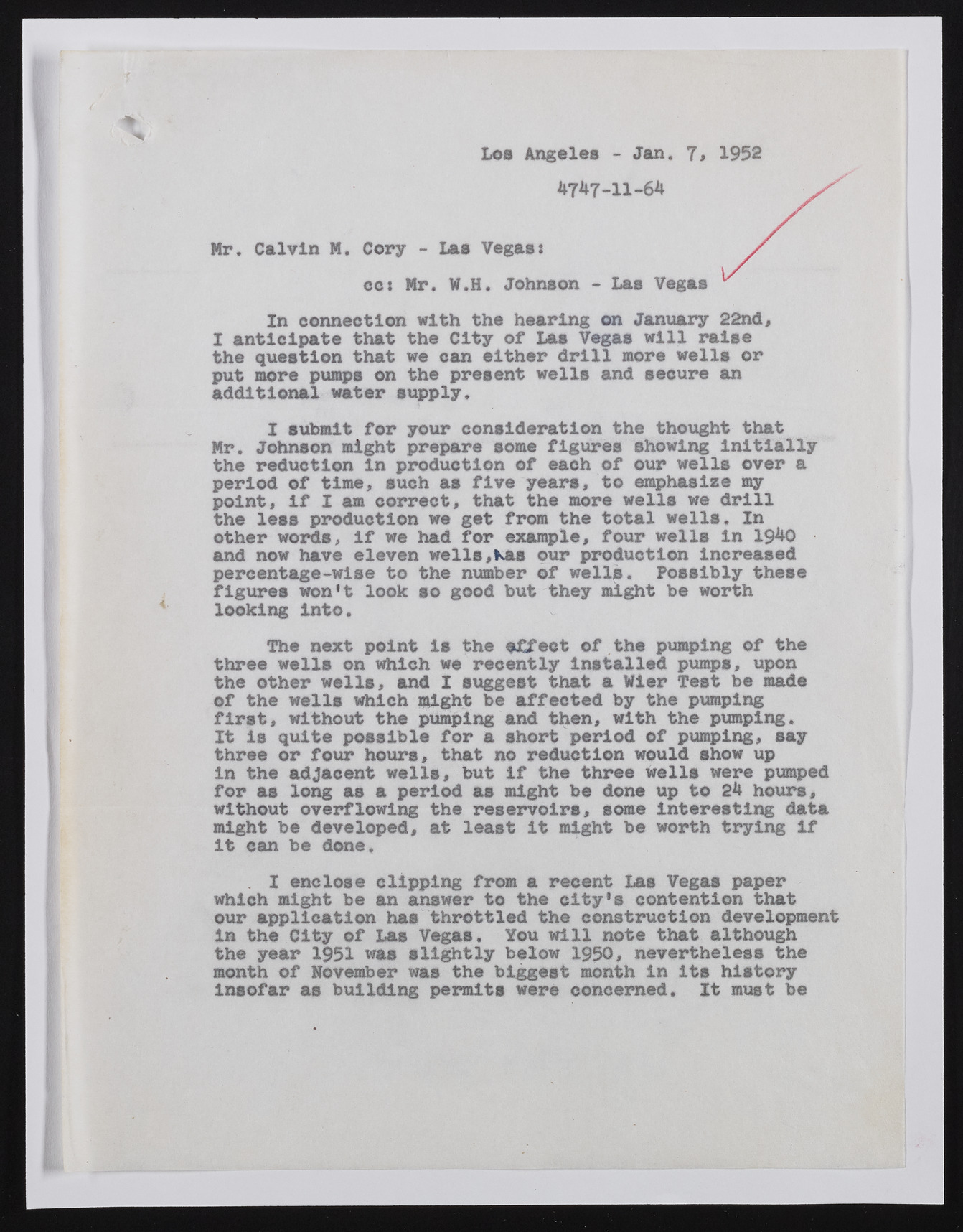Copyright & Fair-use Agreement
UNLV Special Collections provides copies of materials to facilitate private study, scholarship, or research. Material not in the public domain may be used according to fair use of copyrighted materials as defined by copyright law. Please cite us.
Please note that UNLV may not own the copyright to these materials and cannot provide permission to publish or distribute materials when UNLV is not the copyright holder. The user is solely responsible for determining the copyright status of materials and obtaining permission to use material from the copyright holder and for determining whether any permissions relating to any other rights are necessary for the intended use, and for obtaining all required permissions beyond that allowed by fair use.
Read more about our reproduction and use policy.
I agree.Information
Digital ID
Permalink
Details
Member of
More Info
Rights
Digital Provenance
Publisher
Transcription
Los Angeles - Jan. 7, 1952 4747-11-64 Mr. Calvin M. Cory - Las Vegas oo! Mr. V.H. Johnson - Las Vegas In connection with the hearing on January 22nd, I anticipate that the City of Las Vegas will raise the question that we can either drill more wells or put more pumps on the present wells and secure an additional water supply. I submit for your consideration the thought that Mr. Johnson might prepare some figures showing Initially the reduction in production of each of our wells over a period of time, such as five years, to emphasize my point, if I am correct, that the more wells we drill the less production we get from the total wells. In other words, if we had for example, four wells in 1940 and now have eleven wells,Kas our production Increased percentage-wise to the number of wells. Possibly these figures won't look so good but they might be worth looking Into. The next point Is the effect of the pumping of the three wells on which we recently Installed pumps, upon the other wells, and I suggest that a Wler Test be made of the wells which might be affected by the pumping first, without the pumping and then, with the pumping. It is quite possible for a short period of pumping, say three or four hours, that no reduction would show up In the adjacent wells, but If the three wells were pumped for as long as a period as might be done up to 24 hours, without overflowing the reservoirs, some Interesting data might be developed, at least it might be worth trying if it can be done, . I enclose clipping from a recent Las Vegas paper which might be an answer to the city's contention that our application has throttled the construction development in the City of Las Vegas, You will note that although the year 1951 was slightly below 1950, nevertheless the month of November was the biggest month In its history insofar as building permits were concerned. It must be

